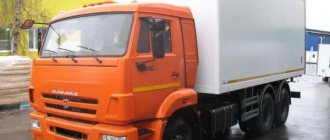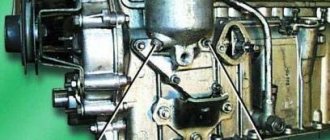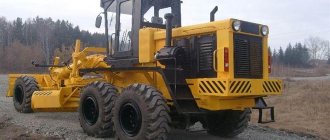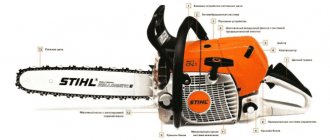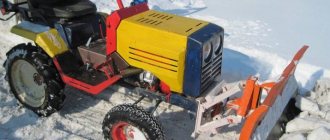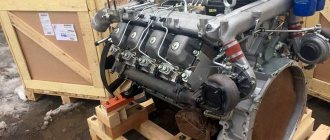YaMZ-536 is the basic 6-cylinder model of the in-line YaMZ-530 family. Modifications YaMZ-536-10 (-30, -40), YaMZ-5361, YaMZ-5362, YaMZ-5363, YaMZ-5364 are structurally similar to the base model, differ in fuel equipment adjustments by changing the settings of the electronic control unit.
Engines of the YaMZ-530 family in terms of emissions of harmful substances comply with the Special Technical Regulations “On the requirements for emissions of harmful (pollutant) substances from automotive equipment produced in circulation on the territory of the Russian Federation”, environmental class Euro-4: To achieve the environmental level of Euro-4, a system is used EGR (exhaust gas recirculation (how to turn off EGR)) and catalytic converter with a replaceable filter. The parameters of Rule No. 96-02 are achieved without the use of an EGR system and a converter. • for road equipment - UNECE Rules No. 49RII-04, No. 24-03. • for off-road vehicles - UNECE Regulations No. 96-02, No. 24-03.
New generation YaMZ engines
The YaMZ-536 model became the basis for a number of modifications:
- YaMZ-536-10 (-30, -40);
- YaMZ-5361 (62, 63, 64).
The design of the modified engines is based on the basic model. The changes affected the parameters of fuel equipment. According to technical regulations, the YaMZ engine line complies with the Euro-4 environmental class.
Engine YaMZ-534
Emissions of harmful and polluting substances are reduced due to exhaust gas recirculation (EGR system), a catalytic converter with a replaceable cartridge. YaMZ-536 diesel engines were developed in collaboration with Austrian engineers.
The series started in the early 2000s with the 4-cylinder YaMZ-534. The YaMZ-536 engine turned out to be a cut above. The indicators for reducing fuel consumption and noise pollution met global requirements.
Three years were spent on testing and improvements. Since 2012, the engine-building enterprise with a design capacity of 50 thousand engines per year has been providing cars, buses and special equipment with diesel engines. There are economical options for liquefied gas.
Application area:
- City buses LIAZ;
- Cars "MAZ", "Ural";
- Tractors "Kirovets";
- Graders DZ-98;
- Motor locomotives MTG repair and restoration of railway tracks.
Autodiesel (YaMZ)
| Number | 5340.1111010 |
| Name | injection pump |
| Quantity per "Quantity" | 1 |
| Model | 5340 |
| Group | Engine power system |
| Subgroup | High pressure fuel pump |
| Part serial number | 010 |
Serial number: 5340.1111010 Quantity per model: 1
Source of the article: https://www.autoopt.ru/auto/catalog/engine/yamz/yamz_536_100_2352/35
Design features of the YaMZ-536 diesel engine
At the design stage, a safety margin was included for subsequent strengthening of the engine. The pressure reserve has not been used up. At peak loads - planned 210 bar. The piston group is not produced.
YaMZ-536 engine components layout diagram
The cooling device complex and lubrication system have a boost potential reserve, designed for 40 kW. The level of vibration and noise pollution has been brought to European standards. The crankcase gas exhaust system does not require intervention and is maintenance-free.
The engine housing is machined from castings. The cylinder block of the YaMZ-536 power unit is cast from gray cast iron. The cylinder liners are pressed into the rigid power belt of the fins of the water jacket. The cylinder head block is bolted with constant tightening force. The cooling system is liquid and combines the flow cavities of the head and cylinder block.
The crankshaft is solid forged and made of steel. Bench dynamic balancing is carried out. The seats of the connecting rod and main journals are strengthened by high-frequency hardening. The main bearings are lubricated through drillings in the crankshaft journals.
The cast-iron flywheel is attached to the rear end of the crankshaft and is equipped with a ring gear for starting the engine with a starter. The torsional vibration damper is a liquid damper designed to dampen excess vibration.
Tips for adjusting MAZ valves
inlet and check valve are components of the gas distribution mechanism.
The parts are moved using cams in guide bushings through roller tappets. The lift height of MAZ valves is 13.5 mm.
Features of mechanisms
The inlet valve is made of hardened steel.
The diameter of the plate is 61 mm. The working chamfer angle is 121 degrees (+30). The diameter of the rod is 12-0.055 mm. The end is hardened to a depth of three millimeters.
The MAZ check valve is also made of hardened steel. The diameter of the plate is 48 mm.
The working chamfer angle is 91 (+30) degrees. The diameter of the rod is 12-0.095 mm.
A hardened steel tip is welded to the end. The valve stems are graphitized.
The guide bushings must be impregnated with spindle oil after machining. Each MAZ valve has two springs made of special wire.
The presence of parts allows for high resonant characteristics of the drive. The outer and inner springs have opposite windings.
The lower ends of the elements rest on washers, and the upper ends on plates. The parts are made of steel. The plates are attached to the rod with two valve nuts, clamped through an additional bushing.
The mechanism rests on the flat surface of the plate. Friction is quite low. Therefore, the MAZ valve can rotate freely during operation.
The rocker arms are mounted on separate axles. Made from forged steel. At the end of the rocker arm there is a cylindrical platform with a hardened surface.
Through the ground area, forces are transmitted to the end of the MAZ valve during engine operation. Lubrication is supplied through rods and special oil channels.
The valve drive uses rolling bearings. This allows for reliable operation of the timing mechanism.
How to adjust the valve on a MAZ?
Adjusting the MAZ valves will ensure normal operation of the gas distribution mechanism. Therefore, before starting the test, place the vehicle on a level surface.
Be sure to put the car on the handbrake.
Valve checking or adjustment is carried out by adjusting the thermal gap designed for a tight fit on the seat.
When measuring on a cooled engine, this value should be 0.25-0.3 mm. It is allowed to increase the gap up to 0.4 mm. To increase the accuracy of adjustment of MAZ valves, a repeated check is carried out with the rocker arms of the intake and exhaust valves pressed.
All actions must be performed in the exact sequence:
- Unscrews the bolts securing the cylinder heads;
- Remove the covers;
- We check the tightening torque of the rocker arm bolts (120-150 N*m);
- Using a key, turn the MAZ crankshaft clockwise and observe the movement of the intake valve;
- We continue to rotate. Rotates the shaft 1/3 of a turn;
- Using a feeler gauge, check the gap between the toe of the rocker arm and the end of the valve.
- We adjust the MAZ valves using a locknut and a screwdriver.
After checking, you need to start the engine to check and listen to the operation of the motor. Then replace the removed cylinder covers and secure them carefully.
It is also recommended to check the condition of the gaskets.
There should be no oil leaks in the area where the covers fit. Valve adjustment on MAZ is carried out no earlier than an hour after the car’s engine has completely stopped.
An increase in the thermal gap leads to a deterioration in the filling of the cylinders with fresh air, as well as to insufficient purification of exhaust gases.
Therefore, the power of the MAZ engine decreases significantly.
Impact loads increase. As a result, the wear of timing parts increases. Fuel consumption increases. Knocks appear in the MAZ valve .
Reducing the gaps can lead to overheating and burnout of the mechanisms.
A loose fit of the valves to the seats will disrupt the gas-dynamic process, which will lead to a decrease in the technical performance of the engine.
Connecting rod and piston group of YaMZ-536 engines
YaMZ-536 piston ring installation diagram
The pistons are solid cast, with 3 grooves for the rings. A heat-resistant cast iron insert is provided to install the top ring. To cool the piston, an oil circulation system is provided in the head.
Oil is supplied from the main line by stationary nozzles. Injections are cyclical, occurring at each return. The coolant is supplied and discharged through 2 vertical channels. Replacement rings are split, made of cast iron.
The connecting rod is made of steel, made in the form of an I-beam. The load-bearing capacity is increased due to the stepped design of the upper head. Thin-walled main bearing shells are replaceable, with an anti-friction layer of bronze applied to a metal base.
YaMZ-536 engine lubrication system
The YaMZ-536 diesel engine has a mixed lubrication system. The oil pump takes oil from the engine crankcase and pumps it into the built-in liquid-oil heat exchanger, where excess temperature is removed.
After cooling, cleaning in the oil filter follows. An increase in pressure in the discharge channel to 9 MPa turns on the action of the pressure reducing valve installed on the cylinder block. Excess oil is drained into the crankcase.
Oil pump YaMZ-536
Removing and installing the YaMZ-650 cylinder head
Remove the cylinder head cover (650.1003256 - assembled).
Release the injector harness from the bracket brackets
Disconnect the electrical wires from the injectors.
Remove the injector harness bracket (650.3724126).
Disconnect the coolant temperature sensor (3) (650.1130556) (see Fig. 1).
Unscrew the screw (1), remove the 1-shaped adapter (2) and the bundle of electrical wires (see Fig. 21).
Unscrew the rotary bolt (310200) with two copper washers (312381) securing the fuel drain pipe from the head.
Remove the fuel drain pipe (650.1104346).
Remove 12 bolts (1) (see Fig. 2) securing the rocker arm axle struts (650.1007108).
Remove the rocker arms with the axle and struts assemblies (650.1007088).
Cooling of the YaMZ-536 motor
The circulating liquid cooling system consists of a pump, a heat exchanger, a water radiator, a fan, an exhaust gas recirculator, and a charge air cooler. A centrifugal pump circulates the coolant.
The turbocharger increases the supply of compressed air to the combustion chambers of the engine. Pressurization of the working cavities is provided by the energy of exhaust gases. Enriching the combustible mixture with an abundance of air stabilizes the energy output parameters.
Supercharging ensures complete combustion of the working mixture in the cylinders. The efficiency of the turbocharger affects the increase in power of the power unit due to the injection of a larger portion of fuel.
Engines YaMZ 530
YaMZ 530-series diesel engines are equipped with turbochargers equipped with a radial centripetal turbine coupled with a centrifugal compressor and a bypass valve.
The air mixture pressurized by the turbocharger of the YaMZ-536 engine requires cooling from 1600C to a maximum of 50–600C. Feed density increases, thermal tension is optimized. The completeness of fuel combustion is interconnected with the quality of the exhaust gas flow.
Exhaust gas recirculation is based on the heat capacity of the exhaust gas. A fifth of the exhaust returns to the cylinder and takes away the flash point of the fuel. The supply process and gas volume are controlled by a microprocessor control unit via a pneumatic-electric drive.
Yaroslavl breakthrough: YaMZ creates engines for all commercial vehicles in Russia
It’s not often that you feel proud of the domestic auto industry. For a long time, Russia simply did not have its own modern and competitive truck engine, but now it does. The YaMZ-530 family was developed from scratch and is produced on the latest equipment.
In 1964, Yuri Vizbor wrote a song where the chorus was the words:
“But we make rockets
And they blocked the Yenisei,
And also in the field of ballet
We are ahead of the rest!”
This song turned out to be a hymn of timelessness, characteristic of post-perestroika Russia, where everything was falling apart and disintegrating... And it seemed that there would be nothing new domestic...
No, of course, we also make rockets , and the Yenisei was blocked a long time ago. True, I have absolutely no idea (in my dullness) what is going on in the field of ballet, but I know that in Yaroslavl we have learned to make high-quality and modern engines.
Main technical characteristics of YaMZ-536
In-line 4-stroke 6-cylinder diesel engine with rear-wheel drive working units, turbocharging, liquid cooling system:
- Working cylinder volume – 6.65 l;
- Nameplate power – 229 kW;
- Torque – 1226 N m;
- Motor life – 1 million km;
- Curb weight - 0.64 tons.
Engine YaMZ-536 with turbocharging
Engine Operation and Maintenance
To maintain technical characteristics during engine operation, reliable and long-term operation, it is necessary to comply with the rules and standards for servicing the power unit established by the manufacturer. The document regulating these works is the YaMZ-536 operating manual. It can be divided into the following large sections, which describe:
- Motor specifications.
- Operating principles and main structure of the engine.
- Applied technological materials and liquids.
- Rules for performing work processes during operation of the YaMZ-536 (start, operation, stop).
- Maintenance requirements and frequency.
- The procedure for diagnosing faults and ways to eliminate them.
- Various reference information.
Knowledge and compliance with the manufacturer's requirements guarantees reliable operation of the engine.

